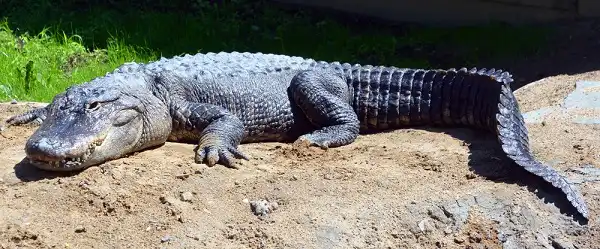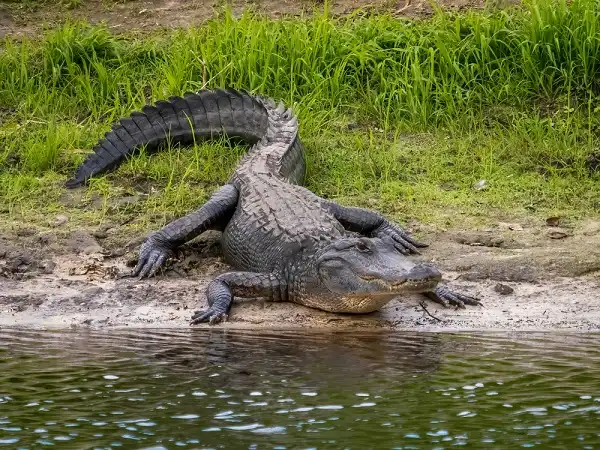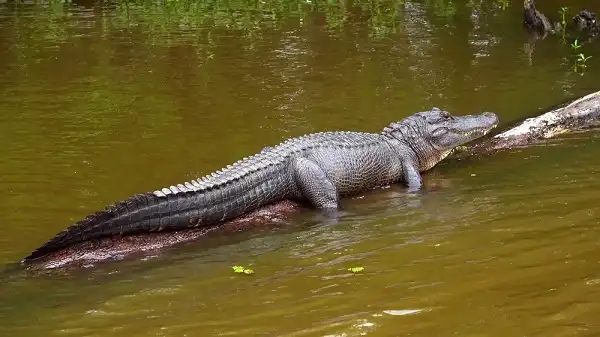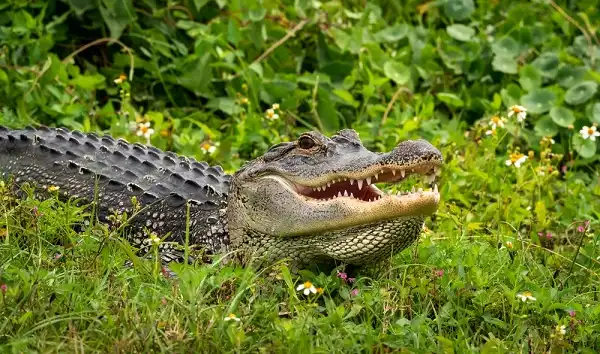There are many different types of animals in the world, but one of the most interesting is the alligator. Alligators are large reptiles that can be found in both fresh and saltwater environments. They are known for their impressive size and strength, as well as their sharp teeth. Although they may seem dangerous, alligators are actually quite shy around humans and usually only attack if they feel threatened. If you’re ever lucky enough to see an alligator in the wild, it’s sure to be a memorable experience.

Alligator Description
They are typically dark green or black in color with yellowish markings around the eyes and mouth. Alligators have four short legs, webbed feet for swimming, and a long powerful tail. Although they move slowly on land, alligators are surprisingly agile when swimming.
Alligator Habitat
Alligators can be found throughout a wide range of habitats, from freshwater marshes and swamps to brackish coastal estuaries. They are most common in the southeastern United States, where they live in a variety of wetlands such as rivers, lakes, ponds, and swamps. Alligators also inhabit some parts of Mexico, Central America, South America, and China.
The ideal habitat for alligators includes plenty of shallow water with abundant aquatic vegetation that provides food sources and covers for them. Alligators build their homes by excavating burrows or creating dens in mud banks. These dens provide protection from predators as well as shelter during cold winter months. Alligators will move between different habitats depending on the availability of food sources and environmental conditions.
Alligator Diet
The primary food source for alligators is fish, although they will feed on other animals as well. Other potential sources of food include frogs, birds, turtles, small mammals, and crustaceans.
Alligators have been known to occasionally scavenge carrion such as deer or cattle that have died near bodies of water. However, this behavior is usually limited to smaller individuals or those living in captivity due to the increased competition for food among larger alligators in the wild.

Alligator Size
Alligators have a large, bulky bodies that can range in size from 4 feet to 11 feet long and weigh up to 500 pounds. Their average length is around 7-9 feet. As they age, their size will increase with males growing larger than females. The largest alligator ever recorded was 19 feet 2 inches long and weighed over 2,000 pounds!
Alligators have a unique set of proportions between the length of their head and body as well as the overall size of their jaws. For example, adults typically have a head that accounts for about one-third of their total length while the jaw and snout can be up to half their total length.
Alligator Lifespan
In the wild, alligators live between 30-50 years. Some individuals may live much longer, reaching up to 60 or even 70 years of age in some cases. In captivity, alligators can survive for over 60 years. Alligators reach sexual maturity between 8 and 12 years old.
Alligator Behavior
Alligators are typically solitary animals, often seen alone or in pairs during the mating season. They are territorial and will aggressively defend their territory from intruders or potential predators such as bears or large cats. In addition to vocalizations, they also use physical contact to communicate and assert dominance among other alligators, such as head-bobbing and jaw-snapping displays. Alligators may also be observed basking in the sun or floating lazily on the water’s surface for long periods of time.

Alligator Speed
Alligators are well-adapted for life in the water and can reach speeds of up to 20 miles per hour when swimming. On land, they can move quickly over short distances by moving their bodies in an “S” shape motion. Alligators are also able to leap up to three feet out of the water when hunting or defending themselves from potential predators.
Alligator Hunting
Despite their size and power, alligators are classified as at-risk species in some parts of the world. In areas where they are still hunted for sport or food, sustainable hunting practices need to be maintained in order to ensure the population remains healthy and stable. In addition to hunting, alligators can also face threats from habitat destruction due to human activities such as land development or pollution.
Alligator Conservation
In order to protect this species, conservation efforts need to be put in place. This includes habitat protection and restoration, sustainable hunting practices, and public education about the importance of alligators in our ecosystems. Additionally, research is being conducted on how climate change may affect alligator populations. By understanding the threats these animals face, we can work together to ensure their survival for generations to come.

Alligator Reproduction
Alligators reach sexual maturity between 8 and 12 years old. Males become sexually mature at a smaller size than females, typically around 9 or 10 years old, and start to mate as soon as they are able. Females usually wait until 11 or 12 years of age before mating. Alligator mating season begins in the spring and continues into summer when female alligators lay between 30-50 eggs in nests that have been prepared beforehand. The eggs take around 2 months to hatch and the young alligators stay close to their mother for protection from predators until they are about 4 months old.
Conclusion
Alligators are an incredible species with a fascinating history. Their behavior, speed, and ability to adapt have allowed them to survive in many different habitats around the world for millions of years. Despite their size and power, alligators still face numerous threats from human activities such as habitat destruction and pollution. With continued conservation efforts, we can ensure that these ancient reptiles remain a part of our world for generations to come.
Frequently Asked Question

